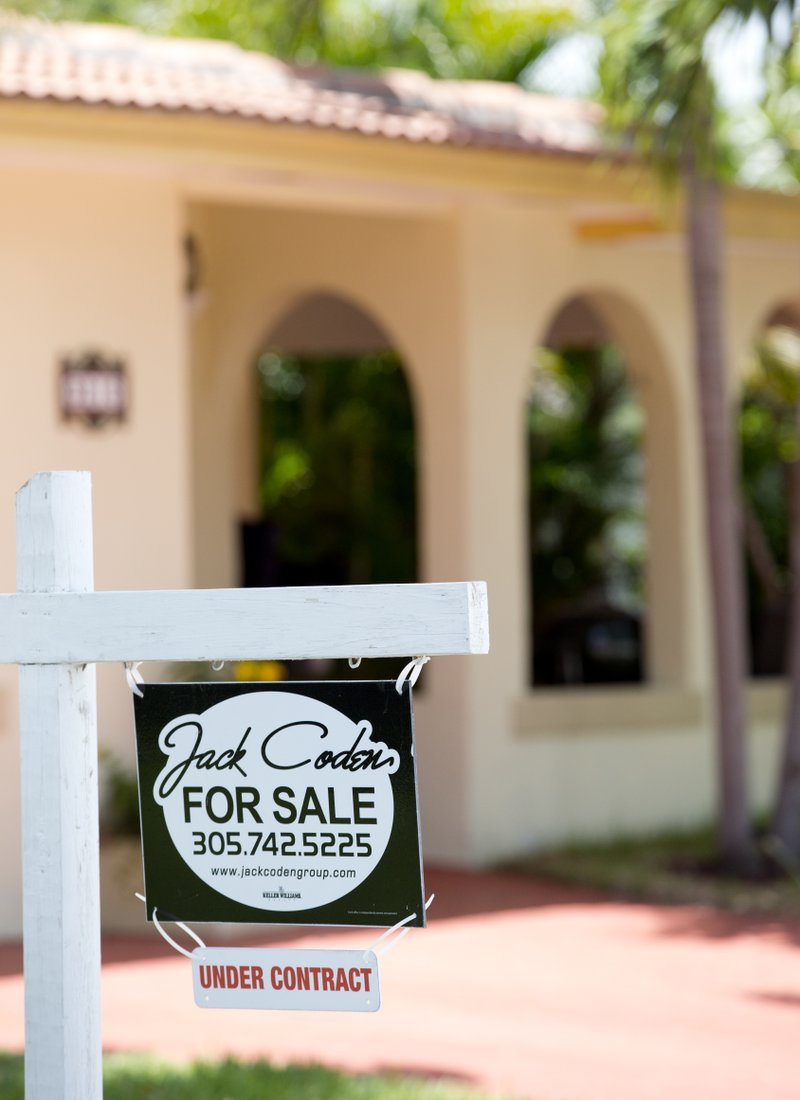WASHINGTON -- U.S. home prices extended their steady upward march in May, spurred by rising sales and a dwindling supply of available houses.
And Americans bought new homes in June at the fastest pace in more than eight years, a sign that a solid job market and low mortgage rates are bolstering the U.S. housing market.
The Standard & Poor's CoreLogic Case-Shiller 20-city home price index increased 5.2 percent in May compared with a year ago. That is down from a 5.4 percent annual gain in April but still above last summer's growth rate.
House prices "are not looking quite as strong as they looked over the last year," economist and Nobel laureate Robert Shiller said Tuesday in an interview on Bloomberg Television.
"People should be buying a house if they want a house and not speculating that these price increases will continue," he said, emphasizing that house price appreciation has averaged less than 1 percent a year over the past century.
Solid job growth and near-record low mortgage rates are spurring Americans to buy houses. Yet higher prices haven't encouraged more people to list their properties for sale. That is forcing buyers to compete against one another and bid up prices, particularly in coastal cities with strong job growth.
"Sellers are in the driver's seat, as buyers contend with fierce competition and very fast-moving markets," Svenja Gudell, chief economist at real estate data provider Zillow, said.
House prices are slowly edging back to their peak levels reached during the housing bubble a decade ago. After falling 35 percent from 2006 through 2012, the 20-city index is now just 8.8 percent below its peak.
Portland, Ore., Seattle, and Denver posted the biggest year-over-year gains in May for the fourth straight month. Home prices increased 12.5 percent in Portland, 10.7 percent in Seattle and 9.5 percent in Denver.
While the 20 city-index remains below its bubble level, seven cities reached new peaks in April, including Portland, Seattle and Denver as well as Boston, Charlotte, Dallas and San Francisco.
Ralph McLaughlin, chief economist at online real estate service Trulia, points out that home price gains in San Francisco, one of the nation's most expensive housing markets, finally appear to be slowing. They rose 6.5 percent from a year earlier, the smallest annual gain in nearly four years.
The housing market has been mostly healthy this year, adding to its steady recovery from the bust that began in 2006. Sales of previously owned houses rose 1.1 percent in June to the highest level in more than nine years.
Still, sales may be held back in the coming months by the lack of available houses. The number for sale has fallen 5.8 percent in the past year, to 2.12 million, according to the National Association of Realtors.
That constraint could already be having an effect. The number of Americans who signed contracts to buy houses fell in May, according to the Realtors, and is below its year-ago level for the first time in nearly two years.
Builders are breaking ground on more single-family houses, which increases construction jobs. But the additional homebuilding hasn't lifted the supply of homes enough to slow price gains.
Mortgage rates are near historic lows, which can offset price gains by keeping monthly payments in check. The average 30-year fixed mortgage rate rose to 3.45 percent last week, according to the Federal Home Loan Mortgage Corp. That's down from 4.04 percent a year ago.
The Commerce Department said Tuesday that new-home sales rose 3.5 percent last month to a seasonally adjusted rate of 592,000, the best level since February 2008. Purchases of new homes have climbed 10.1 percent year-to-date, despite volatile sales on a monthly basis.
"Today's report confirms the considerable strength in the housing market over the past few months," said Rob Martin, U.S. economist at Barclays.
Affordability of new houses remains a problem and the potential of new-home sales returning to their historic average sales rate of 650,000 could be limited.
June's median sales price rose 6.1 percent from a year ago to $306,700. Just 4.9 months' supply of new homes is listed for sale, well below this historic average of six months. Sales surged in the West and Midwest by more than 10 percent in June, but declined in the Northeast and South.
While the government's new-home purchase data are subject to big swings from month to month, the broader picture for residential real estate shows steady gains fueled by stable employment and low borrowing costs. Faster wage growth and construction of properties priced for entry-level buyers have the potential of further stoking the market.
"The grinding recovery continues," said Brett Ryan, a U.S. economist at Deutsche Bank Securities Inc. in New York. "The fundamental underpinnings are still really supportive for housing, so it should be a steady contributor to growth over the next year or so."
The market for new houses is roughly just a tenth of the size of the market for previously owned houses, where sales are also rising even as the number of listings are shrinking on a yearly basis.
Information for this article was contributed by Christopher S. Rugaber and Josh Boak of The Associated Press and by Shobhana Chandra and Michelle Jamrisko of Bloomberg News.
Business on 07/27/2016

